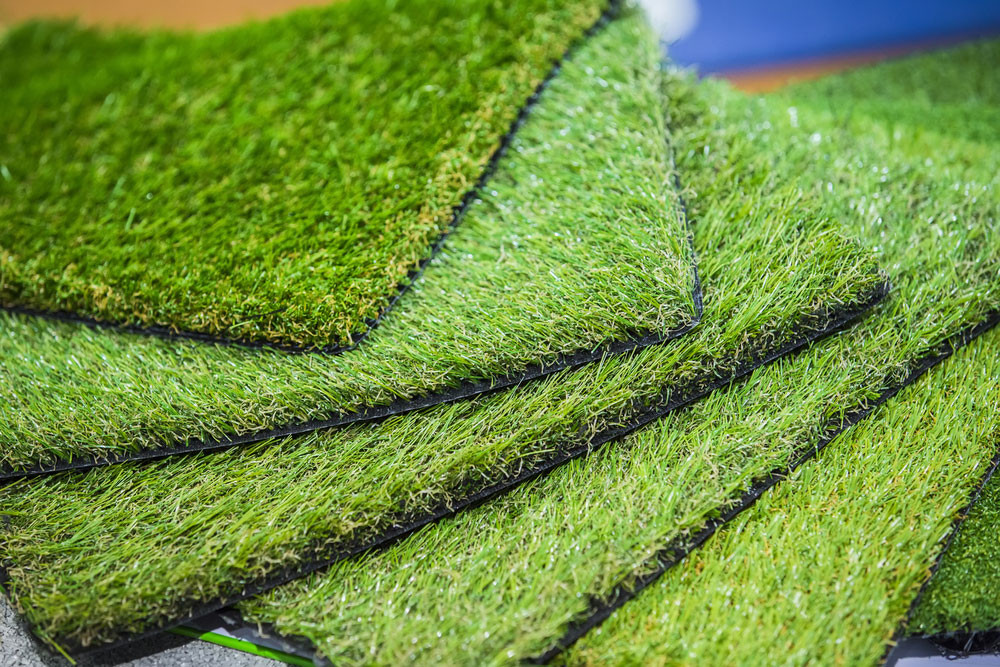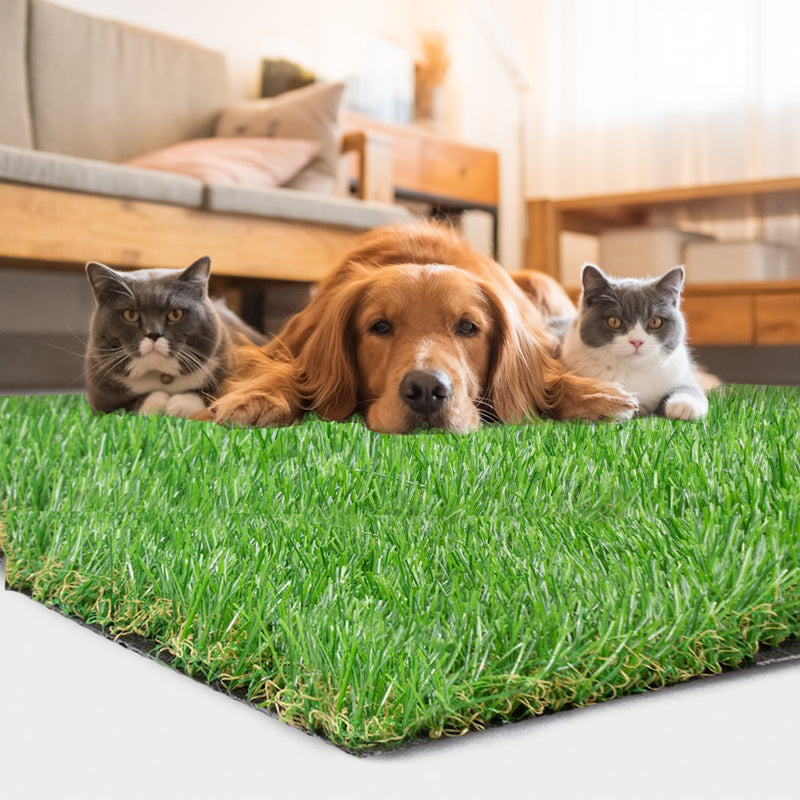Long-Lasting Arizona Artificial Turf for Home and Business Applications
Long-Lasting Arizona Artificial Turf for Home and Business Applications
Blog Article
Explore the Environmental Benefits of Opting for Artificial Lawn Solutions
The adoption of synthetic grass remedies offers an engaging possibility to deal with pushing ecological difficulties. By considerably decreasing water usage and minimizing the application of harmful chemicals, these options not only promote lasting landscaping but also shield regional ecosystems. Moreover, the reduced carbon impact connected with decreased maintenance tasks adds to an extra lasting strategy to land monitoring. Nonetheless, the effects of these benefits expand beyond simple preservation efforts, questioning about their long-term effect on environment conservation and overall eco-friendly balance. Exploring these dimensions discloses a complex interaction worth considering.
Water Preservation Perks
Among the most considerable advantages of synthetic grass is its capacity to preserve water. Conventional lawn lawns call for substantial irrigation, especially in areas prone to drought or water limitations. On the other hand, synthetic grass does not require watering, considerably decreasing the overall demand for water resources. This feature is particularly useful in dry regions where water shortage is a pressing worry.
By getting rid of the requirement for regular watering, synthetic grass adds to lasting landscape techniques and assists mitigate the environmental effect of excessive water usage. The preservation of water expands to the decrease of runoff, which can lead to soil erosion and river pollution.
Furthermore, the installment of synthetic grass allows house owners and districts to assign water resources a lot more effectively, concentrating on vital usages such as alcohol consumption water and farming. The shift in the direction of synthetic grass not just advertises liable water use but likewise lines up with wider environmental objectives aimed at protecting natural resources.
As areas significantly focus on sustainability, the water conservation advantages of synthetic grass offer an engaging situation for its fostering in commercial and domestic landscaping projects.
Lowered Chemical Use
The shift to synthetic turf dramatically reduces the reliance on chemical therapies commonly used in all-natural yard upkeep. Traditional grass monitoring usually includes the application of pesticides, plant foods, and herbicides to promote development and control bugs. These chemicals can pose threats to human health and wellness, local wild animals, and the environment, contributing to dirt and water contamination.
In contrast, synthetic grass eliminates the demand for these damaging materials. By lessening the launch of artificial substances into the ecosystem, synthetic grass advertises much healthier dirt and water systems.
Moreover, the absence of chemical runoff related to synthetic grass installations assists secure regional rivers from air pollution, sustaining marine life and preserving biodiversity. Artificial turf companies phoenix. As neighborhoods significantly focus on lasting practices, selecting synthetic grass offers a practical option that lines up with environmental preservation objectives. With this shift, homeowner can take pleasure in rich eco-friendly areas without endangering environmental wellness, leading the way for a much more sustainable future
Reduced Carbon Footprint

Additionally, the installment of synthetic grass can result in significant water conservation. All-natural yards need considerable amounts of water for watering, which not just adds to the carbon impact related to water extraction and treatment yet also strains neighborhood water resources. In contrast, man-made lawn needs marginal maintenance, calling for no watering, thereby dramatically reducing water usage and its linked power prices.
Additionally, the long life of synthetic grass adds to its reduced carbon impact. With a life-span of up to 15 years or even more, the demand for frequent substitutes is decreased, leading to less waste and lower energy intake in production and getting rid of traditional lawn choices. On the whole, synthetic grass provides a sustainable option for environmentally mindful landscape design.
Habitat Preservation
Habitat conservation is a vital consideration in the argument over click here to read landscaping selections, specifically when contrasting synthetic grass to natural turf. Natural lawn lawns usually call for basics considerable upkeep, including making use of chemicals, fertilizers, and herbicides, which can negatively impact local communities. These chemicals can leach right into the soil and waterways, harming indigenous flora and animals and interfering with neighborhood habitats.
On the other hand, man-made turf presents a possibility to minimize the eco-friendly footprint of landscaping. By opting for artificial grass, home owners can decrease the disturbance of natural habitats connected with conventional grass care techniques. Synthetic lawn removes the requirement for hazardous chemicals, consequently protecting neighboring wildlife and keeping the integrity of surrounding ecological communities. In addition, the setup of fabricated grass can lead to the conversion of previous grass locations into more biodiverse landscapes, such as pollinator gardens or native plant locations, which can support neighborhood wildlife.
Ultimately, the transition to synthetic grass not just preserves water and minimizes upkeep efforts but additionally cultivates a more unified relationship between human tasks and the all-natural atmosphere, advertising habitat preservation in the procedure.
Long-Term Sustainability
Long-term sustainability is a vital consider assessing the advantages of synthetic grass over typical turf lawns. Among one of the most considerable benefits of synthetic grass is its longevity; it can last as much as 15-20 years with minimal maintenance, whereas natural yard needs frequent reseeding and replacement. This longevity minimizes the need for consistent resources, such as water, fertilizers, and chemicals, which are necessary for maintaining a healthy and balanced yard lawn.
Additionally, synthetic grass adds to a decrease in carbon discharges a fantastic read related to yard treatment tools. Typical lawns typically call for gas-powered lawn mowers, trimmers, and blowers, all of which add to air pollution. Phoenix turf companies. In contrast, synthetic grass gets rid of the requirement for such tools, promoting a cleaner atmosphere
Moreover, the production of synthetic grass significantly utilizes recycled materials, improving its sustainability account. As manufacturers adopt eco-friendly methods, the environmental impact of synthetic grass remains to lessen.

Conclusion
The fostering of synthetic grass options offers substantial ecological benefits, consisting of significant water preservation, lowered reliance on unsafe chemicals, and a reduced carbon impact. Fabricated turf aids in preserving all-natural environments by lessening land disruption and promoting long-term sustainability through the usage of durable materials. Collectively, these elements underscore the capacity of synthetic grass to contribute positively to ecological health and wellness and offer a sensible alternative to traditional landscape design techniques in a significantly resource-conscious world.
In contrast, synthetic turf does not require watering, significantly decreasing the total need for water sources. By minimizing the launch of synthetic compounds into the community, fabricated grass advertises much healthier dirt and water systems.
Moreover, the installment of fabricated grass can result in considerable water conservation. In comparison, synthetic lawn requires minimal upkeep, requiring no watering, therefore substantially lowering water use and its linked energy costs.

Report this page